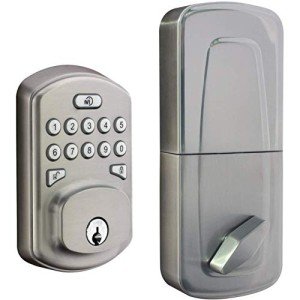Contemporary Lighting in the UK: Transforming Spaces with Illumination
Lighting plays an essential role in specifying the ambiance and functionality of any area. In the UK, contemporary lighting has actually emerged as a significant design component, providing innovative services that blend aesthetic appeals with functionality. This article digs into the various designs, products, and technologies forming contemporary lighting, together with tips for choosing the most appropriate fixtures for various settings.
The Evolution of Contemporary Lighting
Contemporary lighting in the UK shows the changing tastes and technological developments in style. It encapsulates a broad array of designs, including:
- Minimalist: Characterized by simpleness and tidy lines, minimalist lighting fixtures focus on type and function without unneeded decorations.
- Industrial: Inspired by urban settings, industrial lighting combines raw products like metals and woods with strong styles, creating edgy, functional pieces.
- Scandinavian: Known for its warmth and simplicity, Scandinavian lighting often includes soft colors and natural products, concentrating on creating a comfortable atmosphere.
- Smart Lighting: This modern trend incorporates technology with design, enabling users to control their lighting with mobile apps, voice commands, or automation systems.
To illustrate the advancement and variety in the field of contemporary lighting, think about the table listed below, which highlights essential attributes of various designs.
| Style | Secret Characteristics | Popular Materials | Suitable Spaces |
|---|---|---|---|
| Minimalist | Easy, practical designs | Metal, glass, wood | Modern homes, offices |
| Industrial | Raw, unfinished look | Steel, concrete, wood | Lofts, galleries |
| Scandinavian | Comfortable, warm aesthetics | Natural fibers, light wood | Living rooms, coffee shops |
| Smart | Integrated technology, automation | Varies widely | Residences, workplaces, retail spaces |
Picking Contemporary Lighting Fixtures
Selecting the right lighting fixtures for a space requires careful consideration of several elements. Here are crucial elements to remember:
1. Function of the Space
Before choosing fixtures, think about the intended use of the location. Different functions need different types of lighting:
- Task Lighting: Focused lighting for activities such as reading, cooking, or studying. Examples include table lamps and under-cabinet lights.
- Ambient Lighting: General lighting that provides overall illumination. Ceiling lights and pendant fixtures fall under this category.
- Accent Lighting: Designed to highlight particular functions or areas, such as artwork or architectural details. Wall sconces and track lighting are common options.
2. Design and Theme
The lighting should complement the existing decoration. Choose fixtures that match or boost the general theme of the space, whether it's contemporary, rustic, or eclectic.
3. Size and Scale
Think about the percentage of the lighting fixtures relative to the space. A large chandelier may look spectacular above a large dining table, while smaller sized pendant easy work well in compact settings.
4. Energy Efficiency
With increasing energy costs and environmental issues, picking energy-efficient lighting choices is vital. LED lights are an exceptional choice, using durability and lower energy intake.
5. Flexibility
In modern style, versatility is crucial. Fixtures that can be changed or repositioned improve performance, allowing users to create various environments as required.
Popular Contemporary Lighting Brands in the UK
The contemporary lighting market in the UK boasts many brands known for their ingenious designs and quality workmanship. Some noteworthy mentions consist of:
- FLOS: An Italian brand name commemorated for its creative and renowned lighting fixtures that often function as pieces of art.
- Tom Dixon: A British designer acknowledged for his modern, industrial designs that wonderfully integrate metal and light.
- Anglepoise: Known for its versatile, functional lamps, ideal for a range of settings from home workplaces to creative studios.
- John Lewis: Offers a variety of contemporary lighting services that cater to a wider audience, including affordable yet trendy alternatives.
FAQs about Contemporary Lighting in the UK
1. What is contemporary lighting?
Contemporary lighting refers to lighting styles and fixtures that reflect existing design patterns, frequently defined by tidy lines, innovative shapes, and using modern products and technologies.
2. How do I pick the right lighting for my home?
Think about the purpose of the room, existing design, size of fixtures, energy efficiency, and flexibility. Examine how each piece will contribute to the general atmosphere and functionality of your area.
3. What are some energy-efficient lighting choices offered in the UK?
LED lights are the most prominent energy-efficient choice, understood for their long life-span and low energy consumption. Compact fluorescent lights (CFLs) and halogen bulbs are other alternatives.
4. Where can I purchase contemporary lighting in the UK?
Contemporary lighting can be found in different retail outlets, both online and in physical stores. Notable sellers consist of John Lewis, Habitat, and specialized lighting stores.
5. click the up coming website page operate in traditional areas?
Absolutely! Contemporary lighting can boost traditional areas when chosen thoughtfully. Selecting click the up coming website page with a balance between modern and classic components can develop a harmonious style.
Contemporary lighting in the UK represents more than just illumination; it embodies style innovation and creativity, changing spaces and enhancing performance. As patterns continue to progress, property owners and designers alike can explore an extensive variety of designs and innovations, ensuring that every room bursts with life, heat, and character. By thinking about the necessary aspects described in this post, one can curate a collection of lighting fixtures that resonates with individual style and fulfills useful needs, ultimately shaping comfy and visually enticing environments.

